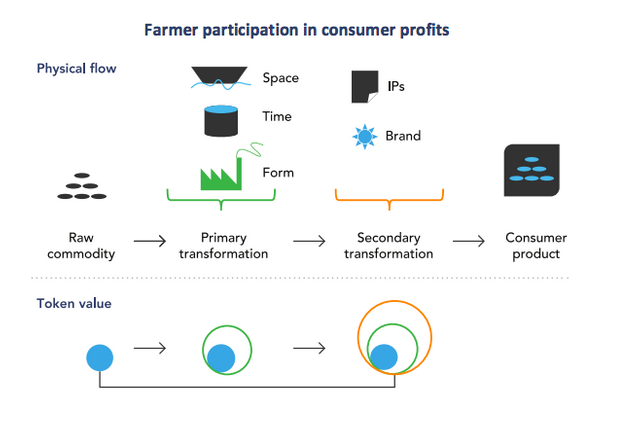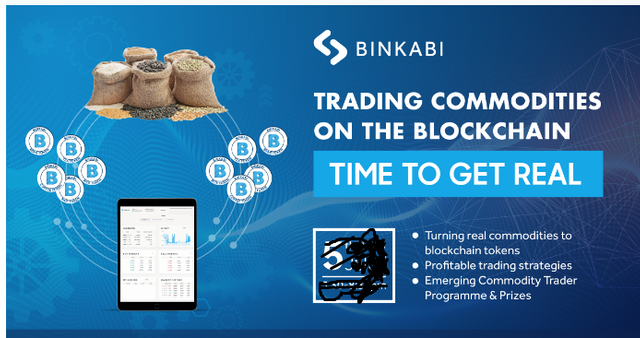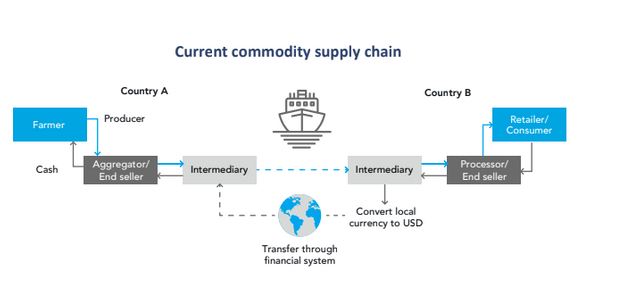Binkabi — A fair smart bartering solution for agro commodities


Binkabi is taking care of a silent crisis that effects those that take care of our daily food. Agricultural markets are failing ordinary farmers in the developing world. These ordinary farmers produce a large fraction of the food of the world and often can barely pay for their own families to have enough protein to live on.
About Binkabi
Commodities 3.0 — Binkabi is a platform for issuing and trading commodities on the blockchain.
Their vision is to empower fairer and more profitable commodity network through collaborative efforts of our members, leveraging blockchain technology.
These ordinary farmers produce a large fraction of the food of the world and often can barely pay for their own families to have enough protein to live on.
Binkabi’s blockchain based solution aims to provide massive value to those who provide value to the product and cut out those that don’t.
- A pressing real-world problem
We have a serious problem with hunger and malnutrition, since many years:
“World hunger is a global epidemic. According to the United Nations, one in nine people today — or 815 million globally — lack access to the food necessary to lead a healthy lifestyle. A staggering 98% of these live in developing countries and 75% live in rural areas that depend on agriculture for their livelihood. As population density rises and resources dwindle, the lasting effects of world hunger only seem to be getting worse. Global communities are calling for change, in whatever form, to move the needle in the right direction.” Article
One of the major problems is the price for food.
Some people in the developing nations simply can’t afford it.
But the price is the price and determined by the market. So not much to do about it asides of government subsidies. Correct?
Not really. When you take a closer look at the price you will find that not all parties involved deliver real value to the goods.
Take rice as an example. Worldwide 3.5 bill. people subsist on rice.
The rice farmer receives 10% of the price, or even less. Additional 45% go to other value adding parties like the transport of the rice, the mill, the packaging, the supermarket etc. The other 45% go to financial intermediaries and border transaction taxes:
· The interest rates for loans in developing countries (if the farmer can receive one at all) are high. In Africa, they are often at 20%+.
· Farmers are forced to sell at harvest to repay their creditors. Price is depressed as everyone is selling at that time unless there is a bad harvest.
· If the farmer needs the money even before the harvest or doesn’t want to take on the risk he can pre-sell at a 20–30% discount two to three months before the harvest.
· The mill also sells rice upfront (futures) to get liquidity
· Middlemen: Due to lack of trust, most international trade is conducted through intermediaries who typically charge between 10–30%, depending on the degree of supply chain integration. Some intermediaries simply do back-to-back trades and earn 10–15%. Others, with their own storage facilities and distribution network, can also earn 15–30%.
· The exporter of the rice often receives payment with a delay of 3 months and must calculate this into his prices as he also pays high interest rates. 16% and 3 month add another 4% to the price.
· The importer pays in USD/EUR and exchanges his local currency to USD/EUR. This adds 7–10% of FX costs. For countries with restricted currency exports this could be even as high as 20–25%. Often fees are not openly displayed but hidden in a bad currency exchange rate.
· The exporter will exchange the USD/EUR to his local currency. This adds additional cost.
About 75% of world trade is done in USD or EUR, while trading between these two economic blocks only covers 40% of all trades. 35% is used by countries that have to exchange their local currency to USD/EUR for international trade and have to pay for this exchange, which adds costs to the goods.

In total a bag of rice that costs 4.27 USD at the retail outlet has an average of 2.37$ equity investment. This is the total value added by every party involved from farmer to retail store. All the rest are fees from financial intermediaries and border taxes etc., all of them not adding value to the product itself.
Source: Podcast Governing the Future #E17
An additional factor is the volatility of the rice prices on the international spot markets. The price in the supermarket stays about the same but the share of the farmer heavily depends on the international rice
href=’https://tradingeconomics.com/commodity/rice'>tradingeconomics.com
Source: https://tradingeconomics.com/commodity/rice
- What is the Binkabi Approach?
Overall Approach
Binkabi is creating a fairer supply chain profit distribution model by switching competition from nodes to networks. Nodes are players at a particular stage in the supply chain whereas networks are the entire supply chain itself.
Depending on commodities, location and timing network surrounding a certain commodity is optimally formed to compete against other networks (like the ABCD or the NOW). Think of different players in the supply chain as different departments/divisions within a large company. The ability to ‘see through’ operating performance of supply chain players allows a customer facing node to form the most efficient supply chain to serve the customer. Each member in this supply chain will be evaluated based on their value-add vs. their costs, in determining their share in the overall network’s profit pool. This will allow the Binkabi Network to compete effectively with other networks (e.g. multinational companies) without a common equity ownership structure.
Farmers and small players will share a much fairer portion of the network’s profit pool.

Congratulations @seun01! You have completed the following achievement on Steemit and have been rewarded with new badge(s) :
Click on the badge to view your Board of Honor.
If you no longer want to receive notifications, reply to this comment with the word
STOPDo not miss the last post from @steemitboard:
SteemitBoard World Cup Contest - The results, the winners and the prizes